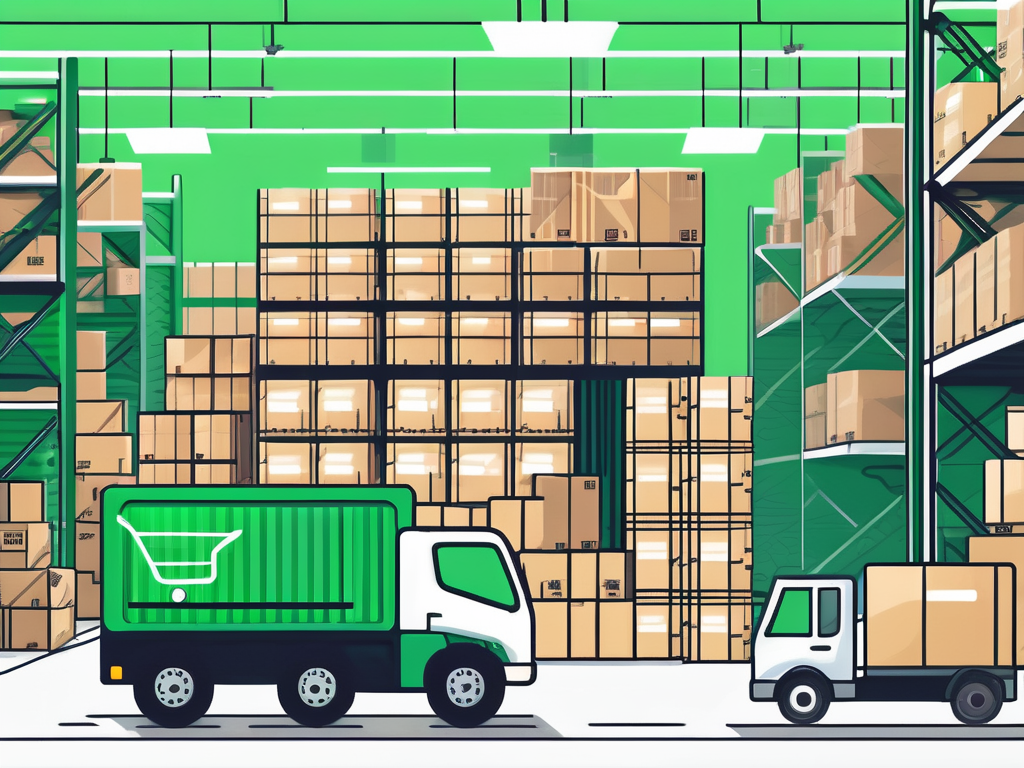Share this
9 Logistics Performance Metrics Your 3PL Should Be Tracking
by Shipfusion Team on Mar. 28, 2025

Effective logistics management is the backbone of ecommerce success. Whether you're shipping thousands of orders per day or scaling into new markets, your third-party logistics (3PL) provider should be tracking key performance indicators (KPIs) on a regular basis. Why? Supply chain KPIs provide transparency into operations, helping you make informed decisions and maintain a seamless customer experience. Not only that, but they’re incredibly helpful in gauging the quality of service you receive as a fulfillment client. In this article, we list nine essential logistics performance metrics every 3PL should be tracking to optimize your supply chain and improve fulfillment efficiency.
1. Order Accuracy Rate
Miscalculated shipments, missing items, or incorrect orders damage customer trust and create costly returns. A 3PL should track Order Accuracy Rate to measure the percentage of correctly fulfilled orders.
Formula:
Order Accuracy Rate = (Total Correct Orders / Total Orders Shipped) × 100
A high order accuracy rate (above 99.9%) ensures minimal errors in fulfillment, reducing customer complaints and operational disruptions. Shipfusion, for example, maintains 99.9% order accuracy, ensuring that your customers receive exactly what they ordered, every time.
How to Improve It:
- Implement barcode scanning and automated picking systems.
- Use warehouse management software (WMS) to streamline workflows.
- Conduct regular quality control audits on fulfillment processes.
2. On-Time Fulfillment Rate
Late shipments lead to negative reviews and lost sales. The On-Time Fulfillment Rate measures the percentage of orders shipped within the expected timeframe.
Formula:
On-Time Fulfillment Rate = (Orders Shipped on Time / Total Orders Shipped) × 100
A reliable 3PL should consistently meet or exceed a 99.9% on-time fulfillment rate, ensuring that customers receive their orders as promised.
How to Improve It:
- Optimize warehouse workflows to reduce order processing time.
- Use predictive analytics to forecast order volumes and prevent bottlenecks.
- Implement automation to reduce manual processing delays.
3. Inventory Accuracy
Inventory discrepancies lead to stockouts, overselling, and fulfillment delays. A 3PL should track Inventory Accuracy to ensure the numbers in their system match the actual stock available.
Formula:
Inventory Accuracy = (Physically Counted Items / System-Recorded Inventory) × 100
Top-tier 3PLs maintain 99%+ inventory accuracy through real-time tracking and automated inventory updates.
How to Improve It:
- Conduct regular cycle counts instead of relying on year-end audits.
- Use RFID technology and automated tracking to monitor stock levels.
- Integrate inventory data with ecommerce platforms to prevent overselling.
4. Warehouse Capacity Utilization
Maximizing warehouse and fulfillment center space is critical to reducing costs and optimizing fulfillment efficiency. Warehouse Capacity Utilization measures how efficiently storage space is used.
Formula:
Warehouse Utilization = (Used Storage Space / Total Available Space) × 100
A well-managed 3PL ensures that storage capacity is optimized without overloading, preventing inefficiencies and delays.
How to Improve It:
- Use vertical storage solutions and dynamic slotting to maximize space.
- Implement a WMS to optimize warehouse layout.
- Reduce slow-moving inventory through data-driven demand forecasting.
5. Average Order Processing Time
Speed is everything in ecommerce. The Average Order Processing Time measures how long it takes a 3PL to pick, pack, and prepare an order for shipment.
Formula:
Average Order Processing Time = Total Processing Time / Total Orders Processed
The best 3PLs process orders within 24 hours or less, minimizing delays and ensuring faster delivery times.
How to Improve It:
- Implement robotic picking systems to accelerate fulfillment.
- Use AI-driven warehouse automation for real-time order prioritization.
- Reduce manual handling through optimized pick-and-pack workflows.
6. Return Rate and Processing Time
Returns are a reality in ecommerce. A 3PL should track both Return Rate (the percentage of orders returned) and Return Processing Time (how long it takes to inspect and restock returned items).
Formula:
Return Rate = (Total Returns / Total Orders Shipped) × 100
A fast, efficient returns management process improves customer satisfaction while minimizing financial loss.
How to Improve It:
- Automate return labels and processing with a streamlined returns portal.
- Establish clear return handling workflows to reduce processing delays.
- Use AI-powered analytics to identify high-return products and address issues.
7. Shipping Cost Per Order
High shipping costs can erode profit margins. Shipping Cost Per Order tracks the average shipping expense per fulfilled order.
Formula:
Shipping Cost Per Order = Total Shipping Expenses / Total Orders Shipped
A 3PL should actively work to reduce shipping costs by optimizing carrier selection, packaging, and fulfillment location strategies.
How to Improve It:
- Negotiate volume-based discounts with multiple carriers.
- Use AI-driven shipping rate comparisons to select the lowest-cost options.
- Optimize packaging to reduce dimensional weight fees.
8. Order Fill Rate
This metric tracks how many customer orders are fulfilled completely from available inventory. A low Order Fill Rate indicates frequent stockouts and lost sales opportunities.
Formula:
Order Fill Rate = (Orders Fulfilled in Full / Total Orders Received) × 100
A 3PL should maintain an order fill rate above 95% to ensure consistent product availability.
How to Improve It:
- Use AI-powered demand forecasting to prevent stockouts.
- Implement safety stock strategies for high-demand products.
- Optimize warehouse picking efficiency to minimize split shipments.
9. Perfect Order Rate
The Perfect Order Rate measures the percentage of orders delivered on time, complete, undamaged, and with accurate documentation.
Formula:
Perfect Order Rate = (Total Perfect Orders / Total Orders Shipped) × 100
A high perfect order rate means fewer customer complaints, chargebacks, and returns.
How to Improve It:
- Use automated order verification to prevent mispicks.
- Implement real-time tracking and proactive issue resolution.
- Work with a 3PL that prioritizes accuracy and efficiency.
Improved Ecommerce Logistics Metrics are Waiting
Now that you understand the importance of logistics performance metrics, it's time to partner with a 3PL fulfillment expert that can help you excel. Shipfusion is dedicated to empowering ecommerce brands with seamless fulfillment solutions that scale with your business. Our commitment to accuracy, efficiency, and cost-effective shipping rates ensures your logistics operations support your growth ambitions. Don't let logistics challenges slow you down.
Contact our team today and discover how Shipfusion can transform your ecommerce operations into a model of logistical excellence.
Share this
You May Also Like
These Related Articles

The Key Ingredients of a Successful 3PL Agreement and Partnership

What to Look for In a 3PL Center: Key Features and Services

Finding the Best Cosmetics 3PL Companies for Your Ecommerce Business
- April 2025 (18)
- March 2025 (26)
- February 2025 (26)
- January 2025 (37)
- December 2024 (16)
- November 2024 (23)
- October 2024 (22)
- September 2024 (27)
- August 2024 (9)
- July 2024 (8)
- June 2024 (5)
- May 2024 (8)
- April 2024 (8)
- March 2024 (6)
- February 2024 (6)
- January 2024 (5)
- December 2023 (3)
- November 2023 (3)
- October 2023 (5)
- September 2023 (4)
- August 2023 (2)
- July 2023 (1)
- June 2023 (4)
- March 2023 (2)
- October 2022 (1)
- September 2022 (5)
- August 2022 (4)
- July 2022 (7)
- June 2022 (4)
- May 2022 (4)
- April 2022 (6)
- March 2022 (2)
- February 2022 (1)
- January 2022 (3)
- December 2021 (2)
- November 2021 (4)
- October 2021 (2)
- September 2021 (5)
- August 2021 (4)
- July 2021 (4)
- June 2021 (3)
- May 2021 (2)
- April 2021 (3)
- March 2021 (3)
- February 2021 (3)
- January 2021 (2)
- December 2020 (4)
- November 2020 (2)
- October 2020 (4)
- September 2020 (2)
- July 2020 (5)
- June 2020 (4)
- May 2020 (2)
- April 2020 (2)
- March 2020 (4)
- February 2020 (1)
- December 2019 (1)
- May 2018 (1)
- March 2018 (2)
- February 2018 (3)
- January 2018 (3)
- November 2017 (3)
- July 2017 (4)
- March 2017 (3)
- February 2017 (5)
- January 2017 (3)
- December 2016 (4)
- November 2016 (6)
- October 2016 (6)
- October 2015 (1)
- September 2015 (1)
- June 2015 (3)
- May 2015 (3)
- August 2014 (1)
- July 2014 (1)
- March 2014 (1)
- February 2014 (1)